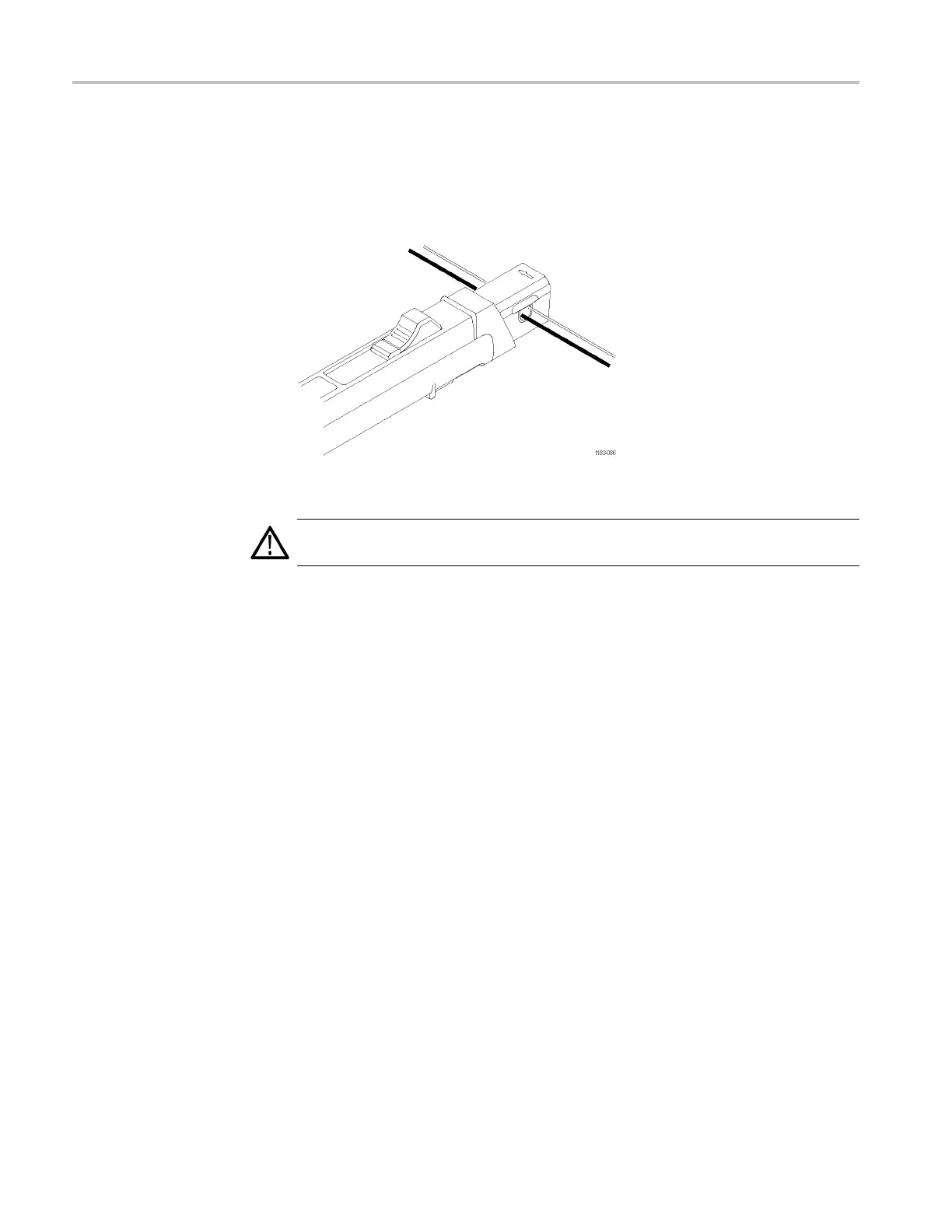Reference Notes
Measuring Dif
ferential Current
You can place two conductors in a current probe to provide differential or null
current measurement. (See Figure 11.) This avoids the necessity of using two
current meas
urement systems with a differential oscilloscope.
Figure 1
1: Measuring two conductors
WARNING. To avoid injury or loss of life from shock or fire, do not put more than
one uninsulated conductor at a time in the probes.
An insulated conductor is defined as any conductor that is s urrounded by an
insulating material that is capable of isolating the voltage present on the conductor.
Note that lacquer coatings like those typically found on transformer windings do
not provide sufficient, reliable insulation for use with current probes. The lacquer
coating can be easily nicked or damaged, compromising the insulating capabilities
of th
e lacquer coating.
Do not force the slide closed. Damage to the probe may result. If you cannot close
the
slide around the conductor(s), either reduce the number of conductors you are
measuring, or, if possible, take your measurement on a smaller conductor.
1. Or
ient the two conductors under test so that the polarities oppose each other.
2. Clamp the current probe around the two conductors as shown. Be careful not
t
o pinch a conductor in the probe jaws.
24 TCPA300/400 Amplifiers and TCP300A/400 Series Current Probes User Manual
